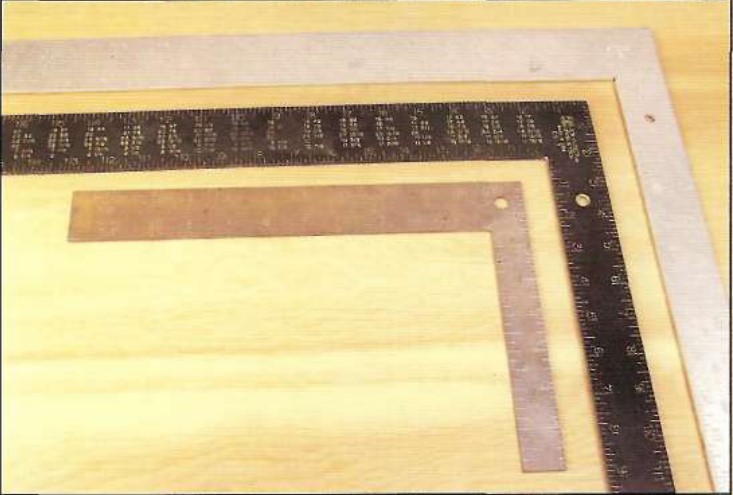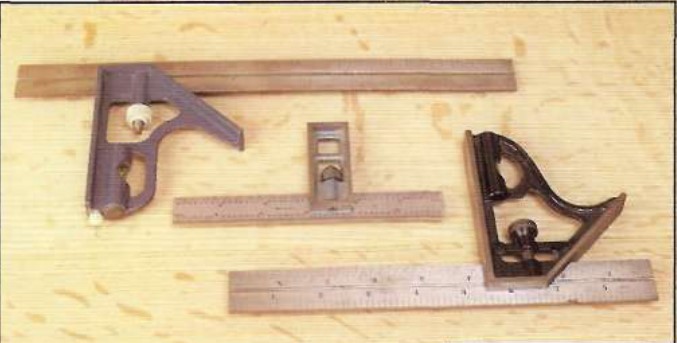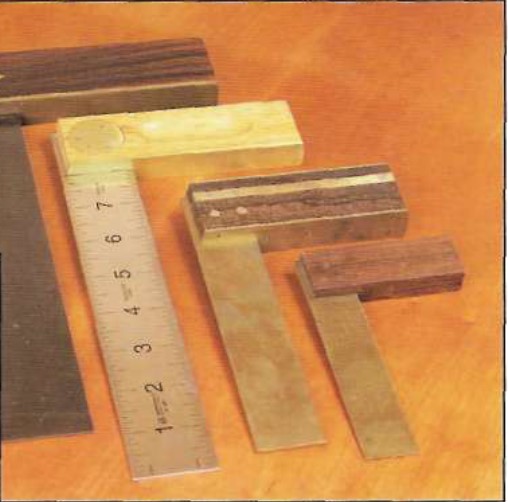A framing square is another one of the tools that some woodworkers feel belong only in a carpenters toolbox. That’s too bad, because a framing square is quite useful in the wood-shop. The longer legs of a framing square make it ideal for checking larger surfaces, where a smaller try square or combination square won’t…
COMBINATION SQUARES
What do you get when you combine a metal rule, try square, miter square, level, and depth gauge into one tool? A combination square. A combination square is a metal rule with a groove in it that accepts a pin in the head of the square. The head has two faces—one at 90 degrees and…
TRY SQUARES
Try squares have long been a mainstay of the woodworker. We use t h e m to lay out and mark boards for joinery, and to check edges to make sure they’re truly square. A try square consists of a metal blade and either a wood or metal stock. Most quality wood stocks have the…
FOLDING RULES
Long before the tape measure arrived, the folding rule was used for layout and measuring. Typically made of boxwood with brass protecting the ends, the most common of these was the four-fold 2-foot rule that fit easily in a pocket. A more modern type of folding rule is the zigzag rule. Although I usually use…




